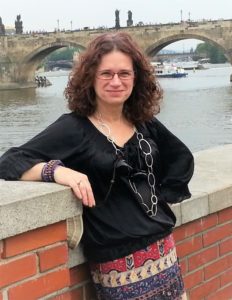Do clocks run slower the closer they are to a nuclear reactor? Griffith University researchers are aiming to find out as they test a revolutionary new theory that may overturn how time and space is viewed.
Working with atomic clocks from the National Measurement Institute (NMI) and anti-neutrinos from Australian Nuclear Science and Technology’s (ANSTO) research reactor, Associate Professor Erik Streed from the Centre for Quantum Dynamics, will test colleague and theoretical physicist Professor Joan Vaccaro’s quantum theory of time.
The theory allows for a possible universe that is static and unchanging. It proposes that the fact that we do see things change over time is not a built-in feature of nature, but rather is caused by a fundamental break in time reversal symmetry, called ‘T violation’.
“If correct, it will overturn the way we think about time and space as well as fundamental laws, such as the conservation of mass,’’ Professor Vaccaro said.

Professor Joan Vaccaro
The theory predicts the time accumulated by a clock depends on the amount of T violation in its local region. A local source of T violation at the quantum scale could contribute to the net amount of T violation and therefore modify dynamics locally.
Anti-neutrinos are sub-atomic particles that exhibit T violation. They move through matter unscathed as they interact weakly with it, and nuclear reactors produce vast streams of them.
A clock placed near the reactor core is predicted to lose synchronicity with a more distant clock. This means that one of the test clocks near the reactor may show some time dilation, or difference in elapsed time, when compared with a clock even a short distance further away from the reactor.
“The reason for the effect is purely quantum in nature and it arises from the T violation of the anti-neutrinos emitted by the reactor core, hence the time-slowing effect is greater closer to the core,’’ Professor Vaccaro said.
In December Associate Professor Streed and his colleagues at NMI travelled to the Australian Centre for Neutron Scattering at ANSTO’s Lucas Heights facility in Sydney to install two timing stations with atomic clocks in proximity to the reactor, where they will collect data for the next six months.
Atomic clocks are often used in tests of fundamental physics to detect tiny effects at the quantum scale because of their outstanding accuracy and precision, which approaches parts in 1017-to1019for the best clocks.
Professor Streed said that if the experiment is successful, it will provide a ‘number’ for how big the quantum effect on time is.
“And if the effect is occurring at the reactor level, we would need to validate it at it at other nuclear reactors and then look for the effect in other places, like planetary orbital data,” he said.
“This is just the beginning. There is so much more to be done in terms of more accurate clocks and larger reactors,’’ Professor Vaccaro said.
“The current experiment is providing an upper bound of the size of the predicted effect. It will provide preliminary groundwork for a larger research program.”
Locally at Griffith this research has been supported by four undergraduate research projects, a PhD student, and an early-career researcher, Dr Fatema Tanjia, investigating various specifics of the expected time violation signature.

